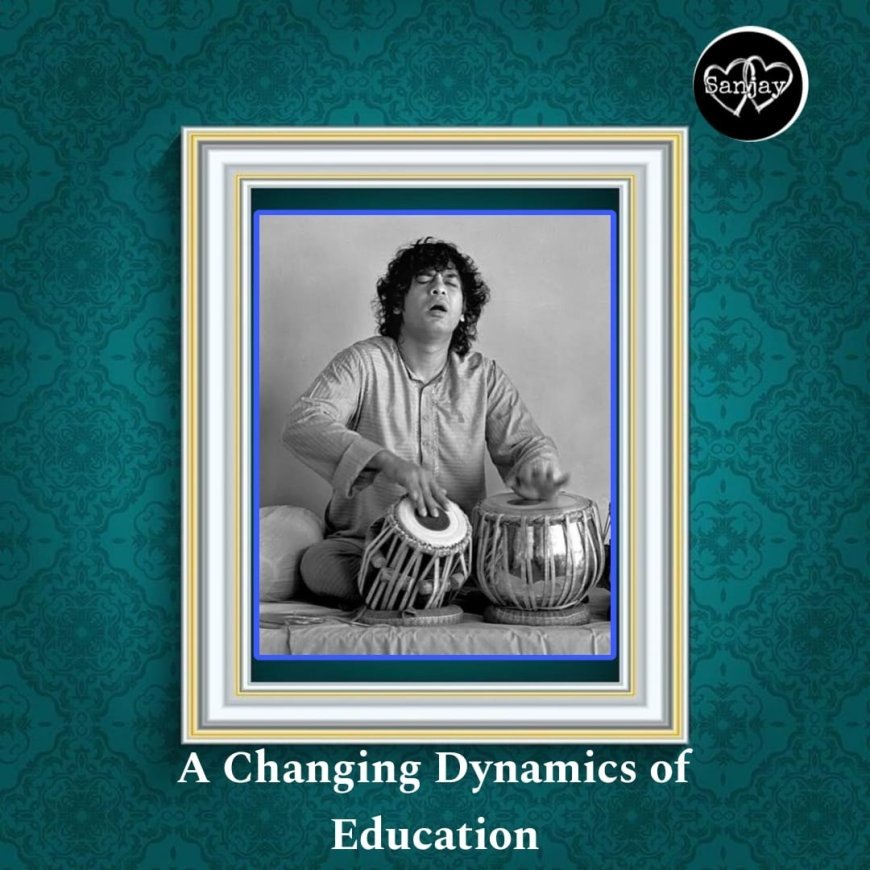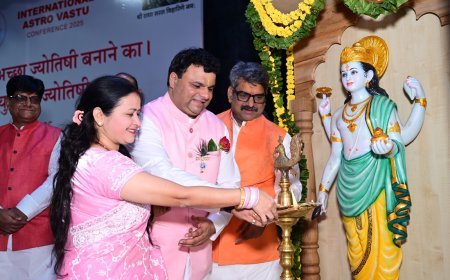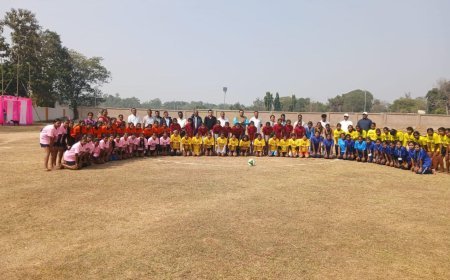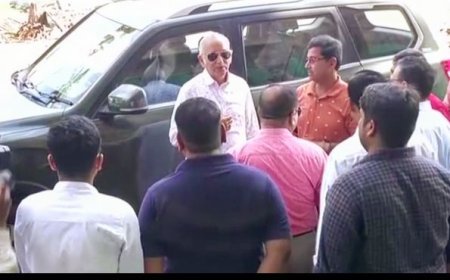The Changing Dynamics of Education

By Sanjay Pattnayak
The Changing Dynamics of Education: A Perspective on Ustad Zakir Hussain’s Quote
Ustad Zakir Hussain’s quote, “A teacher never teaches; instead, a student learns. The student must inspire the teacher to teach,” is a profound reflection of his personal journey with art and learning. It encapsulates the essence of self-driven exploration and the symbiotic relationship between a teacher and a student. However, when viewed through the lens of today’s education system in schools and colleges, this idealistic vision appears challenging to realize.
The Role of Teachers in Modern Education
In the traditional sense, teachers have always been regarded as facilitators, guiding students toward knowledge. However, the dynamics have shifted significantly in the current education system. Many teachers, burdened by administrative duties, rigid curriculums, and a lack of professional motivation, struggle to go beyond their routine responsibilities. This stagnation hinders the possibility of inspiring students to learn creatively or critically.
While Zakir Hussain’s journey is a testament to his ability to captivate his teacher’s attention by reinterpreting lessons, most students today are not equipped with the freedom or resources to explore their individuality. The lack of innovation and creative thinking in classrooms often stems from the teachers’ unwillingness or inability to elevate their standards.
The Student-Teacher Relationship in Crisis
The idea that students can inspire teachers to teach is rooted in mutual respect and an exchange of energy and curiosity. However, in many educational institutions, the relationship between students and teachers has become transactional. Teachers deliver lectures to meet syllabus requirements, and students memorize content to pass examinations. This mechanical approach leaves little room for inspiration or creativity.
Moreover, in an era of increasing class sizes and diminishing teacher-student ratios, personal connections between teachers and students are rare. Without these connections, the possibility of students inspiring teachers becomes remote.
Barriers to an Ideal Learning Environment
Several factors contribute to the current disconnect between teachers and students:
1. Overburdened Teachers: Many educators are overworked, juggling administrative tasks alongside teaching. This reduces their capacity to innovate or engage with students meaningfully.
2. Standardized Curriculum: The rigid frameworks of standardized testing leave little room for teachers or students to deviate from prescribed paths and explore creative interpretations.
3. Lack of Professional Development: Many teachers lack access to continuous training and development, which prevents them from adopting modern teaching methods that can inspire and empower students.
4. Apathy Among Educators: A small but significant number of teachers lack the intrinsic motivation to uplift students, either due to personal disinterest or systemic disillusionment.
A Path Forward
To bridge this gap, the education system must undergo a paradigm shift:
1. Empowering Teachers: Teachers must be given the tools, resources, and training necessary to engage students meaningfully. Encouraging creativity and innovation in teaching can reignite their passion for the profession.
2. Student-Centric Learning: Schools and colleges should adopt a more student-centric approach that encourages independent thinking, creativity, and collaboration.
3. Fostering Mutual Inspiration: Both teachers and students must be encouraged to build relationships based on mutual respect and curiosity. This can be achieved by reducing class sizes, implementing mentorship programs, and creating spaces for open dialogue.
4. Holistic Evaluation: Moving away from rote learning and focusing on holistic assessments can encourage both teachers and students to engage more deeply with the subject matter.
Conclusion
Ustad Zakir Hussain’s perspective on the teacher-student dynamic is undoubtedly inspiring but feels increasingly distant in today’s education system. For his vision to resonate with modern-day learners and educators, both parties must be willing to break free from the constraints of the existing system. It is not enough for students to inspire teachers; teachers must first be willing to inspire and guide students. Only then can education transcend the transactional and become truly transformative.









































